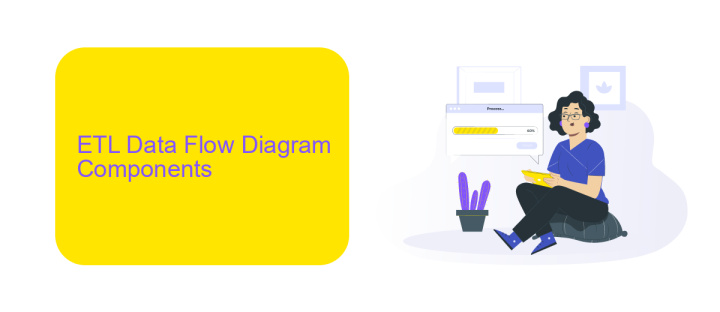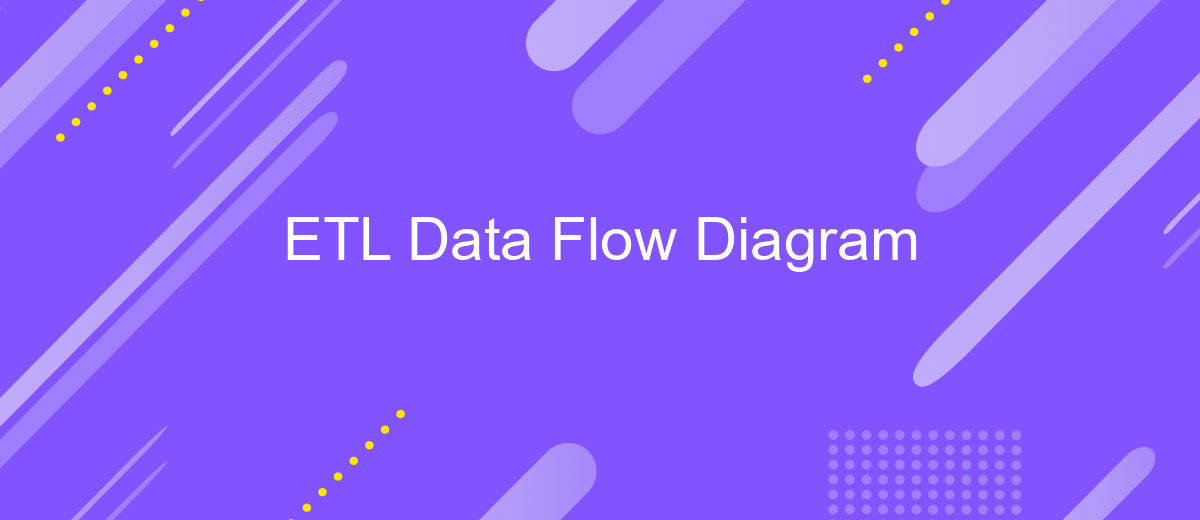ETL Data Flow Diagram
An ETL (Extract, Transform, Load) data flow diagram is a crucial tool for visualizing the process of extracting data from various sources, transforming it into a suitable format, and loading it into a target database or data warehouse. This diagram helps stakeholders understand the data journey, ensuring efficient data integration and management within an organization.
Introduction
ETL (Extract, Transform, Load) data flow diagrams are essential tools for visualizing the process of data integration from various sources into a centralized data warehouse. These diagrams help in understanding the flow of data, identifying potential bottlenecks, and ensuring data accuracy and consistency throughout the ETL process.
- Extract: This phase involves retrieving data from different sources, such as databases, APIs, and flat files.
- Transform: In this step, the extracted data is cleaned, formatted, and transformed to meet the target system's requirements.
- Load: The final phase involves loading the transformed data into the target data warehouse or database.
Services like ApiX-Drive can significantly streamline the ETL process by providing automated data integration solutions. ApiX-Drive allows users to easily connect various data sources and automate the data flow, reducing the need for manual intervention and minimizing errors. By leveraging such tools, organizations can ensure a more efficient and reliable ETL process, ultimately leading to better data-driven decision-making.
ETL Data Flow Diagram Components

ETL Data Flow Diagrams consist of several key components that ensure the seamless extraction, transformation, and loading of data. The primary components include data sources, where raw data is initially extracted from various databases, APIs, or flat files. This data is then passed through a series of transformation processes, which may involve data cleaning, aggregation, and enrichment to ensure the data is in a suitable format for analysis. Finally, the processed data is loaded into a target data warehouse or data lake, making it accessible for business intelligence and analytics purposes.
Integration tools like ApiX-Drive can significantly streamline the ETL process by automating data extraction and transformation from multiple sources. ApiX-Drive provides a user-friendly interface for configuring integrations, reducing the need for extensive coding and manual intervention. This tool supports various data sources and destinations, enabling organizations to efficiently manage their data pipelines and ensure data consistency across platforms. By leveraging such services, businesses can enhance their ETL workflows, ensuring timely and accurate data delivery for decision-making and strategic planning.
Building an ETL Data Flow Diagram

Building an ETL Data Flow Diagram involves a systematic approach to visualize the flow of data from source to destination. This diagram helps in understanding the extraction, transformation, and loading processes, ensuring efficient data integration and management.
- Identify Data Sources: Determine all the data sources that need to be integrated, such as databases, APIs, and flat files.
- Define Transformation Rules: Specify the rules and logic for transforming the extracted data into the desired format.
- Map Data Flow: Create a visual representation of the data flow from sources through transformation processes to the final destination.
- Implement and Test: Use tools like ApiX-Drive to automate and test the data flow, ensuring accuracy and efficiency.
By following these steps, you can create a comprehensive ETL Data Flow Diagram that enhances data integration and management. Tools like ApiX-Drive can simplify the process by providing seamless integration capabilities and automated data flow management, ensuring your ETL processes are both robust and efficient.
Best Practices for Creating ETL Data Flow Diagrams

Creating effective ETL Data Flow Diagrams is crucial for visualizing the data transformation process and ensuring smooth data integration. To start, it is essential to have a clear understanding of your data sources, transformation rules, and target systems. This foundational knowledge will guide the design and help avoid common pitfalls.
Next, use standardized symbols and notations to represent different components of the ETL process. Consistency in diagramming makes it easier for team members and stakeholders to understand and collaborate. Additionally, always include annotations or legends to clarify any complex elements or custom symbols.
- Maintain simplicity by focusing on key components and avoiding unnecessary details.
- Regularly update the diagrams to reflect changes in the ETL process.
- Utilize tools like ApiX-Drive for seamless integration and automation of data flows.
- Ensure data lineage is clearly depicted to track data origins and transformations.
Finally, review and validate the ETL Data Flow Diagrams with your team to ensure accuracy and completeness. This collaborative approach helps identify potential issues early and promotes a shared understanding of the ETL process. Keeping these best practices in mind will enhance the efficiency and clarity of your data integration efforts.
- Automate the work of an online store or landing
- Empower through integration
- Don't spend money on programmers and integrators
- Save time by automating routine tasks
Conclusion
The ETL Data Flow Diagram serves as a critical tool for understanding and optimizing the data transformation process. By visually mapping out the extraction, transformation, and loading phases, organizations can identify inefficiencies, streamline operations, and ensure data integrity. This diagram not only aids in better communication among team members but also facilitates more accurate and effective decision-making.
Leveraging integration services like ApiX-Drive can further enhance the efficiency of ETL processes. ApiX-Drive offers seamless integration capabilities, allowing for automated data flows between various platforms and systems. By incorporating such tools, businesses can reduce manual intervention, minimize errors, and achieve a more agile and responsive data management strategy. In conclusion, a well-constructed ETL Data Flow Diagram, complemented by robust integration services, is essential for any organization aiming to harness the full potential of its data assets.
FAQ
What is an ETL Data Flow Diagram?
Why is an ETL Data Flow Diagram important?
What are the key components of an ETL Data Flow Diagram?
How can I automate the ETL process?
What are some best practices for creating an ETL Data Flow Diagram?
Apix-Drive is a simple and efficient system connector that will help you automate routine tasks and optimize business processes. You can save time and money, direct these resources to more important purposes. Test ApiX-Drive and make sure that this tool will relieve your employees and after 5 minutes of settings your business will start working faster.


